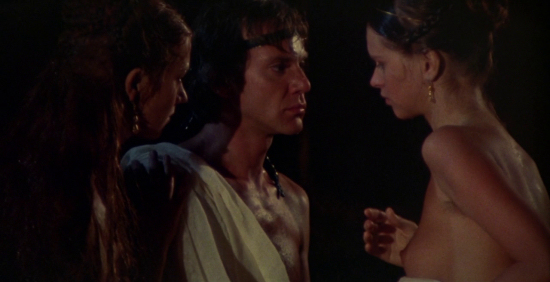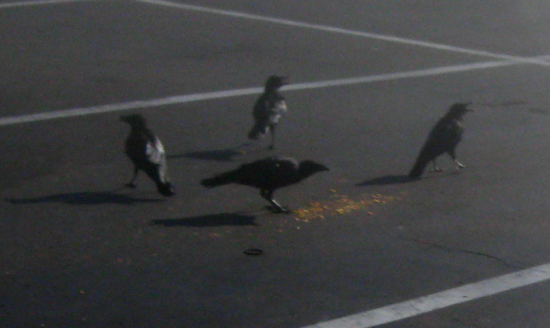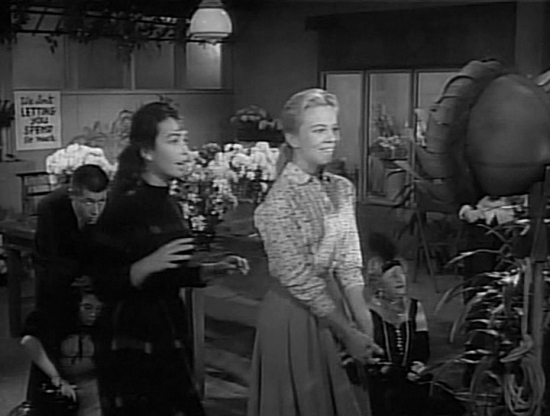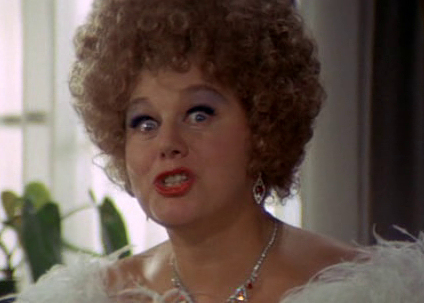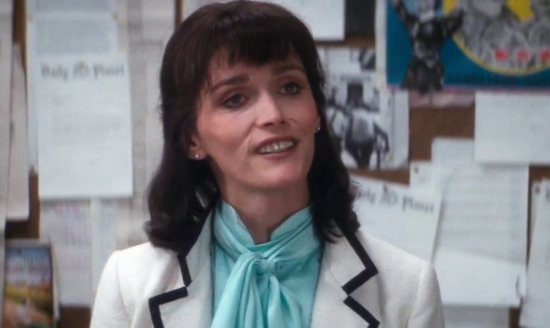
I feel like the average moviegoer in 1957, when they went to see a Jayne Mansfield picture, with Jayne Mansfield's name billed above the title and no-one else's, they probably wouldn't have expected, or wanted, that movie to be quite like Will Success Spoil Rock Hunter? Mansfield appears in maybe a fourth of the film and although she's wearing only a towel or bubbles for most of her screen time, little good advantage is taken of her assets by the people who shot this movie. It's also not a particularly funny movie for one billed as a comedy. It's not exactly bad, it draws you through without anything particularly exciting happening in it, largely because the actors who do get plenty of screen time are very good. The plot uses broad, sitcom logic to bring across a pretty bland moral. But I've seen worse movies.
The real star of this movie is Tony Randall as Rock Hunter. His comedic timing is keen and inventive and keeps his business interesting even when it isn't particularly funny. His funniest moment in the movie is maybe his subtlest, when he walks quietly into a room with a borrowed suit that's much too big for him.

In this scene, two thirds through the movie, which seems like it's going to be the climax, Rock's visiting the hotel room of movie star Rita Marlowe (Mansfield) to get her to sign an endorsement for a product, lipstick, his advertising firm is pushing. She's previously agreed to do him this favour because, through a typical, wacky, improbable chain of events, he's posing as her lover in order to provide her with a certain kind of publicity she wants. In a Billy Wilder movie, maybe there'd be a fantastic neurotic ballet of comedic narrative as Rock repeatedly tries to get Mansfield's signature and is continually thwarted and tempted by her incredible sexuality. She even has a line to her secretary about how she intends to keep Rock in the room. But in this Frank Tashlin film, all that actually happens is he gives her the contract, she signs it, and he leaves. And Mansfield only has one or two more short appearances afterwards.

The movie is in fact about Rock Hunter's success at his advertising firm and how he handles it, ending with a message about how happiness isn't necessarily found at the top of the corporate ladder, though all the characters who are happy at the end do just so happen to be made phenomenally rich by improbable circumstance, and have the luxury of financing whatever lifestyle they want.

In addition to Randall, the movie's kept going by a really great supporting cast. The longest scene Mansfield has in the movie involves little talking from her as she sits in her bubble bath listening to Joan Blondell deliver a monologue about her long lost love. Blondell's performance in this 1957 film strikingly retains the mannerisms of a mainstream early 1930s actress. It made me admire Lillian Gish's ability to seamlessly adapt to any era of film even more.

Giving a better showing are two actors I recognised from Alfred Hitchcock movies--John Williams from Dial M for Murder and To Catch a Thief, and, even more of a standout for me, Henry Jones as Rock's supervisor Henry Rufus.
I recognised him right away, of course, from his tiny role as a judge at Scottie's hearing in Vertigo. Even in the small part, his delivery is strikingly odd. Obviously distaining Scottie's handling of Madeleine's case, he speaks in a low, nasally monotone which is given freer range in Will Success Spoil Rock Hunter? He makes a not particularly funny line into a funny one early in the film when he tells Rock that he has bad news. When Rock says, "I can take it straight!" Rufus says, pouring himself a drink, "So can I. This is all gin." The subtly sad, ironically reassuring tone he gives to the line makes it odd and effective. He's also close to how I always imagined a resident of Innsmouth would look.

From The Shadow over Innsmouth;
His age was perhaps thirty-five, but the odd, deep creases in the sides of his neck made him seem older when one did not study his dull, expressionless face. He had a narrow head, bulging, watery-blue eyes that seemed never to wink, a flat nose, a receding forehead and chin, and singularly undeveloped ears.

One scene in the movie does awkwardly seem to play on Mansfield's sex appeal, as she hugs Rock just as he uses the word "titular" and we see a bag of popcorn he's carrying in his pocket start to pop. I sort of wondered why no play was made on the term "rock hunt" but maybe that would've been a bit too strong.





















